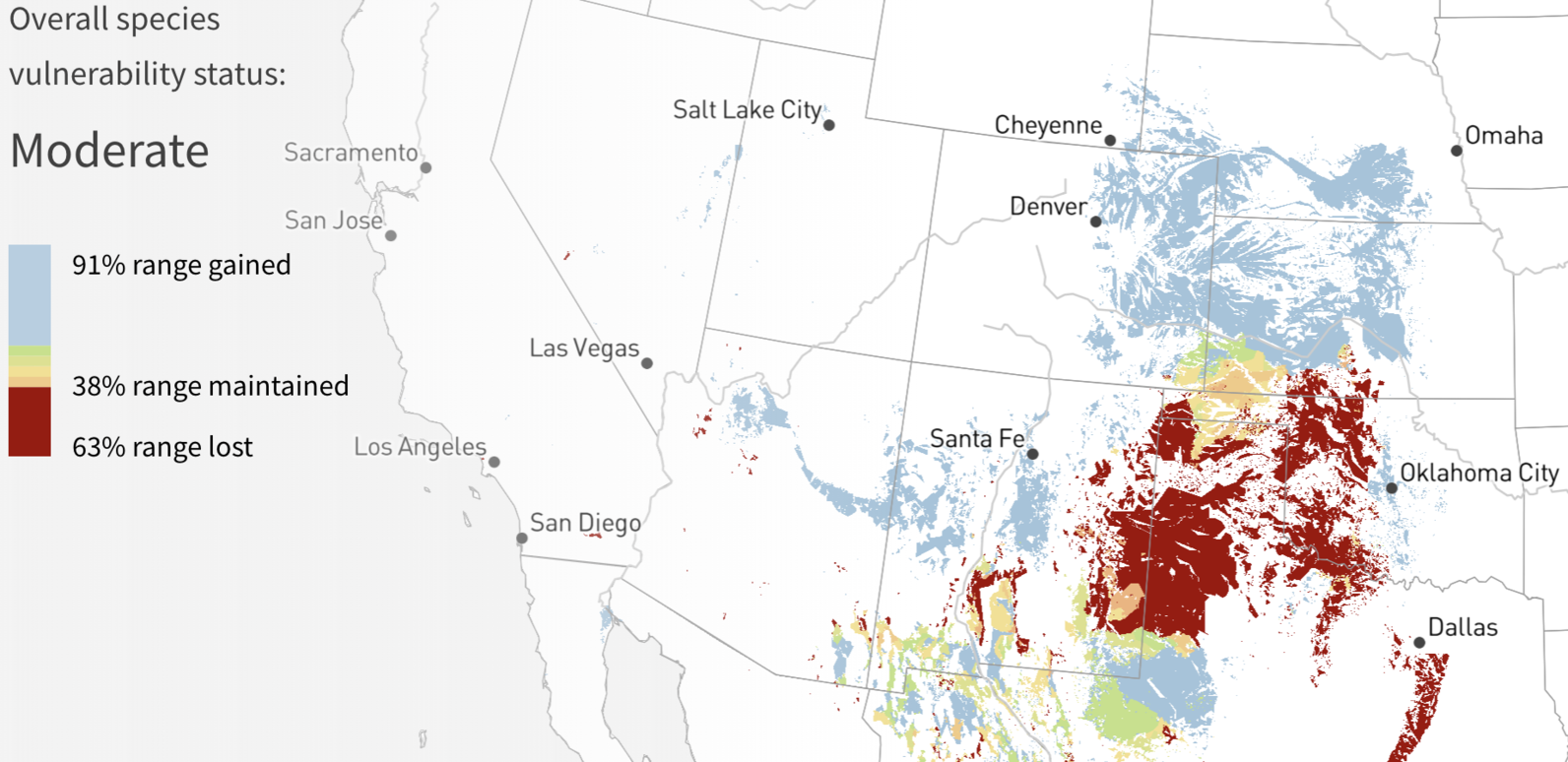Thick-billed Longspur
Prior to European settlement, the Great Plains of North America used to encompass vast stretches of native prairies, wetlands, and complex ecosystems that hosted a huge variety of plant and animal species. However, these ecosystems are disappearing at an alarming rate, with over 80% of grasslands having been converted to agriculture or other land uses in the past century. Subsequently, grassland bird populations have been negatively impacted by this loss of habitat - it is estimated that over 70% of grassland species in North America are in decline. Climate change also threatens the persistence of these vulnerable ecosystems, adding to the constant risk of potential grassland conversion to agriculture, which makes these areas unsuitable for most native grassland bird species.
North American Grassland birds have experienced the largest declines of any group of birds over the last 50 years.

At the very western edge of Nebraska, the idyllic lush grasslands that stretch from Lincoln in the east through the central Sandhills start to become shorter in stature and much more arid. While this may seem like an unwelcome environment for anything other than cattle, the short-grass prairie is in fact a thriving ecosystem that hosts many unique birds. One of these is the Thick-billed Longspur, a sparrow-sized grassland specialist that sports strikingly black and gray plumage with a distinct rusty wing patch. Thick-billed Longspurs prefer something of a habitat ‘extreme’ when it comes to grasslands: short vegetation with lots of bare-ground in-between, with little else in the way of shrubs or tall grasses to be seen.
Thick-billed Longspur populations have declined precipitously in the last 50 years across North America, we some estimates as high as a 94% decline in overall numbers since the 1960s. Recently, the state of Nebraska listed this species as ‘Threatened’ and this status has hastened efforts to begin critical research on this bird in the state. As Nebraska represents the far eastern edge of the longspur’s continental range, this research will inform not only state-level conservation and management efforts but also illuminate potentially unknown aspects of longspur ecology in this dynamic and unique region.
The loss of native grasslands to agriculture and woody encroachment continues to threaten the ecosystems these species rely on. Thick-billed Longspur are a short-grass prairie specialist that rely on informed grazing management. Short-grass prairie is a relatively limited grassland type in Nebraska, which is why it is critical to study this small population to promote its persistence.
Audubon Nebraska is also working closely with the state wildlife management agency, the Nebraska Game and Parks Commission, to promote the conservation of this imperiled grassland bird. Most of the Thick-billed Longspurs in Nebraska breed on working ranchlands and rely on cattle grazing to maintain their preferred short-grass habitat structure. Working with the state agency allows ensures consistent statewide recommendations for land management and future energy development that can avoid longspur hotspots in the state.
American Woodcock
The American Woodcock is one of North America’s most enigmatic shorebirds. It is also one of the earliest-nesting migratory species at temperate latitudes. Woodcock are a quintessential early-successional forest species, requiring open weedy fields for breeding displays, dense shrubs for nesting, and moist forested areas for feeding. Given these habitat needs, woodcock have large but declining populations in the northeastern US, Canada, and upper Midwest.
Nebraska is situated at the western edge of the American Woodcock’s range and does not contain habitat-features that are typically associated with woodcock.
In Nebraska, woodcock are poorly known and understood, as the majority of Nebraska (i.e. grasslands and row-crop agriculture) would not be considered ‘typical’ or ‘likely’ woodcock habitat (i.e. mixed-growth forests). Recent evidence suggests a potential woodcock expansion westward in Nebraska and elsewhere, but the dynamics of this population are largely unknown.
From 2021-2022, Nebraska Game and Parks Commission with Audubon Nebraska completed a two-year study investigating the seasonal timing, habitat use, breeding and migratory behaviors of American Woodcock across eastern Nebraska. Using satellite GPS transmitters, singing-ground surveys, and historical data, this study has illuminated the ecology of woodcock at the extreme edge of their range and clarified much of this species’ status in the state.
Working with Nebraska Game and Parks, we were able to track woodcock in Nebraska and throughout their migrations using state-of-the-art GPS transmitters.





